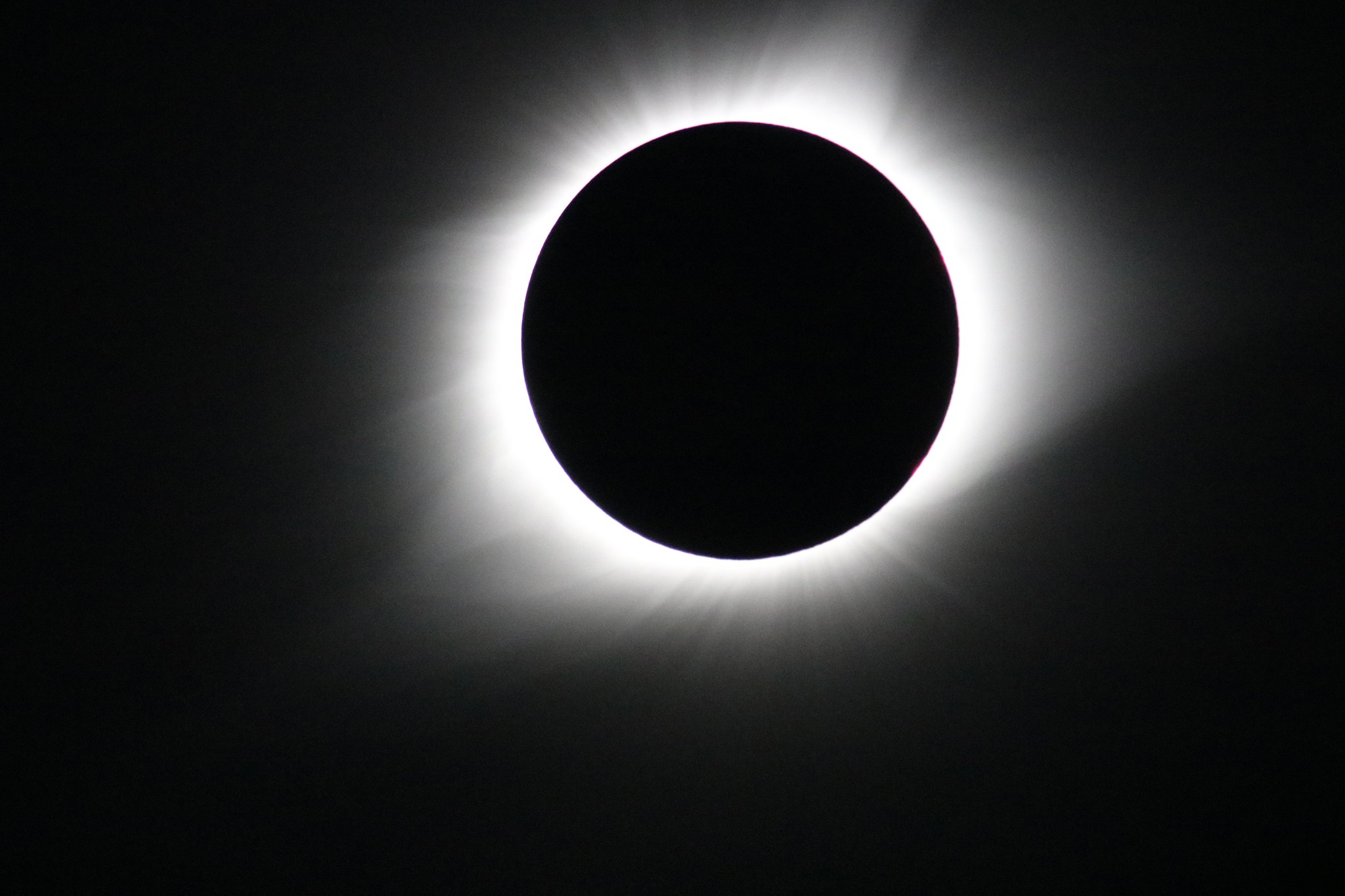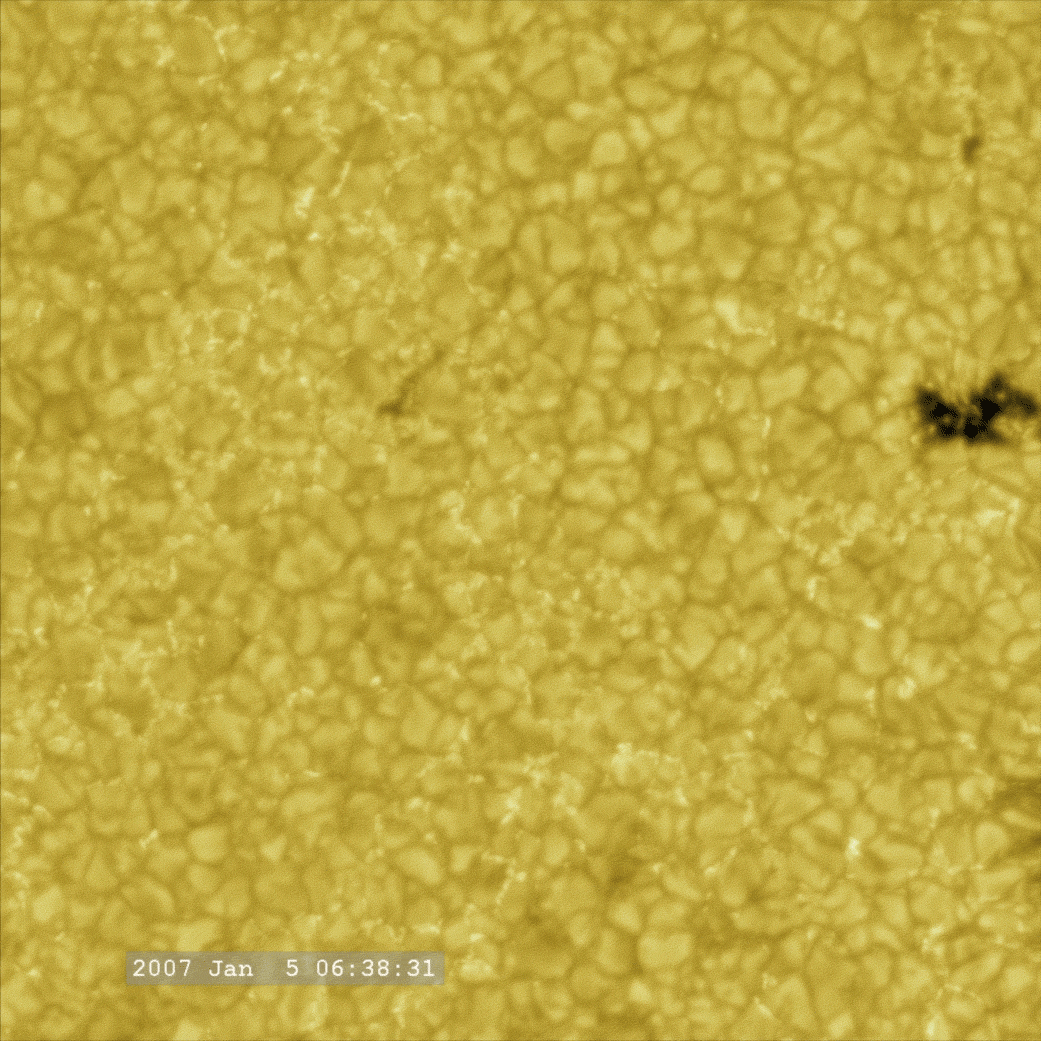Something mysterious is going on at the Sun. In defiance of all logic, its atmosphere gets much, much hotter the farther it stretches from the Sun’s blazing surface.
Temperatures in the corona — the tenuous, outermost layer of the solar atmosphere — spike upwards of 2 million degrees Fahrenheit, while just 1,000 miles below, the underlying surface simmers at a balmy 10,000 F. How the Sun manages this feat remains one of the greatest unanswered questions in astrophysics; scientists call it the coronal heating problem. A new, landmark mission, NASA’s Parker Solar Probe — scheduled to launch no earlier than Aug. 11, 2018 — will fly through the corona itself, seeking clues to its behavior and offering the chance for scientists to solve this mystery.
From Earth, as we see it in visible light, the Sun’s appearance — quiet, unchanging — belies the life and drama of our nearest star. Its turbulent surface is rocked by eruptions and intense bursts of radiation, which hurl solar material at incredible speeds to every corner of the solar system. This solar activity can trigger space weather events that have the potential to disrupt radio communications, harm satellites and astronauts, and at their most severe, interfere with power grids.
Above the surface, the corona extends for millions of miles and roils with plasma, gases superheated so much that they separate into an electric flow of ions and free electrons. Eventually, it continues outward as the solar wind, a supersonic stream of plasma permeating the entire solar system. And so, it is that humans live well within the extended atmosphere of our Sun. To fully understand the corona and all its secrets is to understand not only the star that powers life on Earth, but also, the very space around us.
Credits: NASA’s Goddard Space Flight Center/Joy Ng
Download this video in HD formats from NASA Goddard’s Scientific Visualization Studio
A 150-year-old mystery
Most of what we know about the corona is deeply rooted in the history of total solar eclipses. Before sophisticated instruments and spacecraft, the only way to study the corona from Earth was during a total eclipse, when the Moon blocks the Sun’s bright face, revealing the surrounding, dimmer corona.
The story of the coronal heating problem begins with a green spectral line observed during an 1869 total eclipse. Because different elements emit light at characteristic wavelengths, scientists can use spectrometers to analyze light from the Sun and identify its composition. But the green line observed in 1869 didn’t correspond to any known elements on Earth. Scientists thought perhaps they’d discovered a new element, and they called it coronium.

Not until 70 years later did a Swedish physicist discover the element responsible for the emission is iron, superheated to the point that it’s ionized 13 times, leaving it with just half the electrons of a normal atom of iron. And therein lies the problem: Scientists calculated that such high levels of ionization would require coronal temperatures around 2 million degrees Fahrenheit — nearly 200 times hotter than the surface.
For decades, this deceptively simple green line has been the Mona Lisa of solar science, baffling scientists who can’t explain its existence. Since identifying its source, we’ve come to understand the puzzle is even more complex than it first appeared.
“I think of the coronal heating problem as an umbrella that covers a couple of related confusing problems,” said Justin Kasper, a space scientist at the University of Michigan in Ann Arbor. Kasper is also principal investigator for SWEAP, short for the Solar Wind Electrons Alphas and Protons Investigation, an instrument suite aboard Parker Solar Probe. “First, how does the corona get that hot that quickly? But the second part of the problem is that it doesn’t just start, it keeps going. And not only does heating continue, but different elements are heated at different rates.” It’s an intriguing hint at what’s going on with heating in the Sun.
Since discovering the hot corona, scientists and engineers have done a great deal of work to understand its behavior. They’ve developed powerful models and instruments and launched spacecraft that watch the Sun around the clock. But even the most complex models and high-resolution observations can only partially explain coronal heating, and some theories contradict each other. There’s also the problem of studying the corona from afar.
We may live within the Sun’s expansive atmosphere, but the corona and solar plasma in near-Earth space differ dramatically. It takes the slow solar wind around four days to travel 93 million miles and reach Earth or the spacecraft that study it — plenty of time for it to intermix with other particles zipping through space and lose its defining features.
Studying this homogenous soup of plasma for clues to coronal heating is like trying to study the geology of a mountain, by sifting through sediment in a river delta thousands of miles downstream. By traveling to the corona, Parker Solar Probe will sample just-heated particles, removing the uncertainties of a 93-million-mile journey and sending back to Earth the most pristine measurements of the corona ever recorded.
“All of our work over the years has culminated to this point: We realized we can never fully solve the coronal heating problem until we send a probe to make measurements in the corona itself,” said Nour Raouafi, Parker Solar Probe deputy project scientist and solar physicist at the Johns Hopkins University Applied Physics Laboratory in Laurel, Maryland.
Traveling to the Sun is an idea older than NASA itself, but it’s taken decades to engineer the technology that makes its journey possible. In that time, scientists have determined exactly what kinds of data — and corresponding instruments — they need in order to complete a picture of the corona and answer this ultimate of burning questions.
Explaining the corona’s secrets
Parker Solar Probe will test two chief theories to explain coronal heating. The outer layers of the Sun are constantly boiling and roil with mechanical energy. As massive cells of charged plasma churn through the Sun — much the way distinct bubbles roll up through a pot of boiling water — their fluid motion generates complex magnetic fields that extend far up into the corona. Somehow, the tangled fields channel this ferocious energy into the corona as heat — how they do so is what each theory attempts to explain.

One theory proposes electromagnetic waves are the root of the corona’s extreme heat. Perhaps that boiling motion launches magnetic waves of a certain frequency — called Alfvén waves — from deep within the Sun out into the corona, which send charged particles spinning and heat the atmosphere, a bit like how ocean waves push and accelerate surfers toward the shore.
Another suggests bomb-like explosions, called nanoflares, across the Sun’s surface dump heat into the solar atmosphere. Like their larger counterparts, solar flares, nanoflares are thought to result from an explosive process called magnetic reconnection. Turbulent boiling on the Sun twists and contorts magnetic field lines, building up stress and tension until they explosively snap — like breaking an over-wound rubber band — accelerating and heating particles in their wake.
The two theories aren’t necessarily mutually exclusive. In fact, to complicate matters, many scientists think both may be involved in heating the corona. Sometimes, for example, the magnetic reconnection that sets off a nanoflare could also launch Alfvén waves, which then further heat surrounding plasma.
The other big question is, how often do these processes happen — constantly or in distinct bursts? Answering that requires a level of detail we don’t have from 93 million miles away.
“We’re going close to the heating, and there are times Parker Solar Probe will co-rotate, or orbit the Sun at the same speed the Sun itself rotates,” said Eric Christian, a space scientist at NASA’s Goddard Space Flight Center in Greenbelt, Maryland, and member of the mission’s science team. “That’s an important part of the science. By hovering over the same spot, we’ll see the evolution of heating.”
Uncovering the evidence
Once Parker Solar Probe arrives at the corona, how will it help scientists distinguish whether waves or nanoflares drive heating? While the spacecraft carries four instrument suites for a variety of types of research, two in particular will obtain data useful for solving the coronal heating mystery: the FIELDS experiment and SWEAP.
Surveyor of invisible forces, FIELDS, led by the University of California, Berkeley, directly measures electric and magnetic fields, in order to understand the shocks, waves and magnetic reconnection events that heat the solar wind.
SWEAP — led by the Harvard-Smithsonian Astrophysical Observatory in Cambridge, Massachusetts — is the complementary half of the investigation, gathering data on the hot plasma itself. It counts the most abundant particles in the solar wind — electrons, protons and helium ions — and measures their temperature, how fast they’re moving after they’ve been heated, and in what direction.
Together, the two instrument suites paint a picture of the electromagnetic fields thought to be responsible for heating, as well as the just-heated solar particles swirling through the corona. Key to their success are high-resolution measurements, capable of resolving interactions between waves and particles at mere fractions of a second.
Parker Solar Probe will swoop within 3.9 million miles of the Sun’s surface — and while this distance may seem great, the spacecraft is well-positioned to detect signatures of coronal heating. “Even though magnetic reconnection events take place lower down near the Sun’s surface, the spacecraft will see the plasma right after they occur,” said Goddard solar scientist Nicholeen Viall. “We have a chance to stick our thermometer right in the corona and watch the temperature rise. Compare that to studying plasma that was heated four days ago from Earth, where a lot of the 3D structures and time-sensitive information are washed out.”
This part of the corona is entirely unexplored territory, and scientists expect sights unlike anything they’ve seen before. Some think the plasma there will be wispy and tenuous, like cirrus clouds. Or perhaps it will appear like massive pipe cleaner-like structures radiating from the Sun.
“I’m pretty sure when we get that first round of data back, we’ll see the solar wind at lower altitudes near the Sun is spiky and impulsive,” said Stuart Bale, University of California, Berkeley, astrophysicist and FIELDS principal investigator. “I’d lay my money on the data being much more exciting than what we see near Earth.”
The data is complicated enough — and comes from multiple instruments — that it will take scientists some time to piece together an explanation for coronal heating. And because the Sun’s surface isn’t smooth and varies throughout, Parker Solar Probe needs to make multiple passes over the Sun to tell the whole story. But scientists are confident it has the tools to answer their questions.
The basic idea is that each proposed mechanism for heating has its own distinct signature. If Alfvén waves are the source of the corona’s extreme heat, FIELDS will detect their activity. Since heavier ions are heated at different rates, it appears that different classes of particles interact with those waves in specific ways; SWEAP will characterize their unique interactions.
If nanoflares are responsible, scientists expect to see jets of accelerated particles shooting out in opposite directions — a telltale sign of explosive magnetic reconnection. Where magnetic reconnection occurs, they should also detect hot spots where magnetic fields are rapidly changing and heating the surrounding plasma.
Discoveries lie ahead
There is an eagerness and excitement buzzing among solar scientists: Parker Solar Probe’s mission marks a watershed moment in the history of astrophysics, and they have a real chance of unraveling the mysteries that have confounded their field for nearly 150 years.
By piecing together the inner workings of the corona, scientists will reach a deeper understanding of the dynamics that spark space weather events, shaping conditions in near-Earth space. But the applications of this science extend beyond the solar system too. The Sun opens a window into understanding other stars — especially those that also exhibit Sun-like heating — stars that could potentially foster habitable environments but are too far to ever study. And illuminating the fundamental physics of plasmas could likely teach scientists a great deal about how plasmas behave elsewhere in the universe, like in clusters of galaxies or around black holes.
It’s also entirely possible that we haven’t even conceived of the greatest discoveries to come. It’s hard to predict how solving coronal heating will shift our understanding of the space around us, but fundamental discoveries such as this have the capacity to change science and technology forever. Parker Solar Probe’s journey takes human curiosity to a never-before-seen region of the solar system, where every observation is a potential discovery.
“I’m almost certain we’ll discover new phenomena we don’t know anything about now, and that’s very exciting for us,” Raouafi said. “Parker Solar Probe will make history by helping us understand coronal heating — as well as solar wind acceleration and solar energetic particles — but I think it also has the potential to steer the direction of solar physics’ future.”
Related:
- NASA Prepares to Launch Parker Solar Probe, a Mission to Touch the Sun
- Traveling to the Sun: Why Won’t Parker Solar Probe Melt?
- Two New Missions Will Go Closer to Our Star Than Ever Before
By Lina Tran
NASA’s Goddard Space Flight Center, Greenbelt, Md.
























